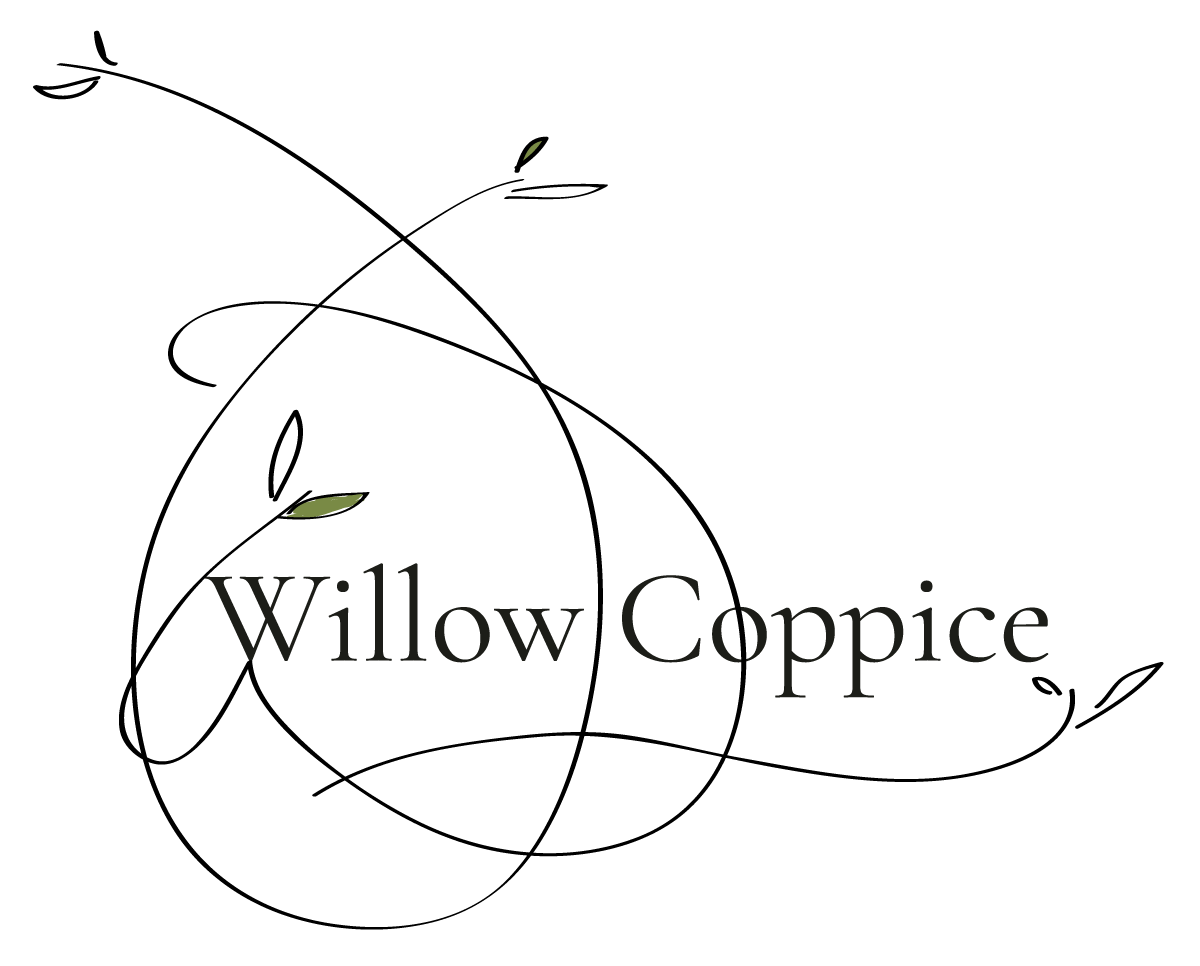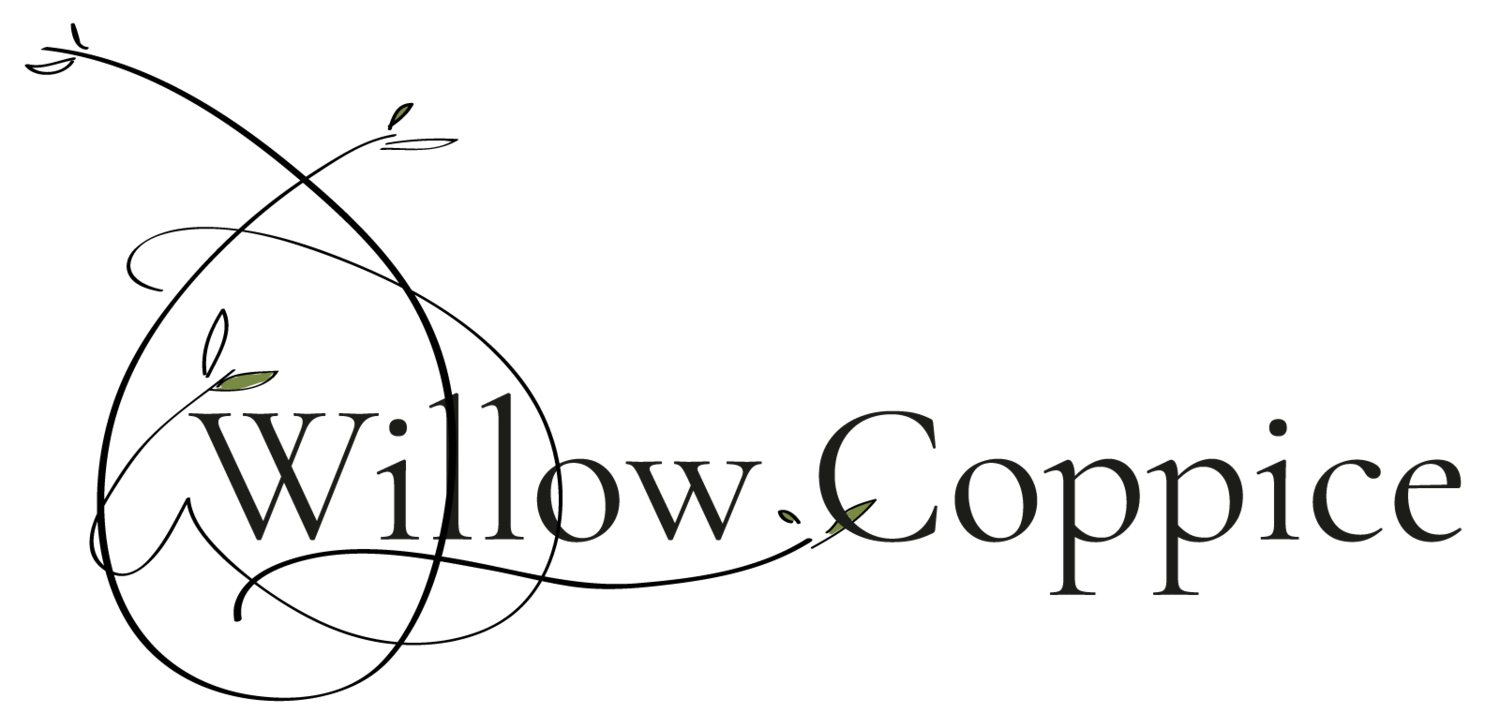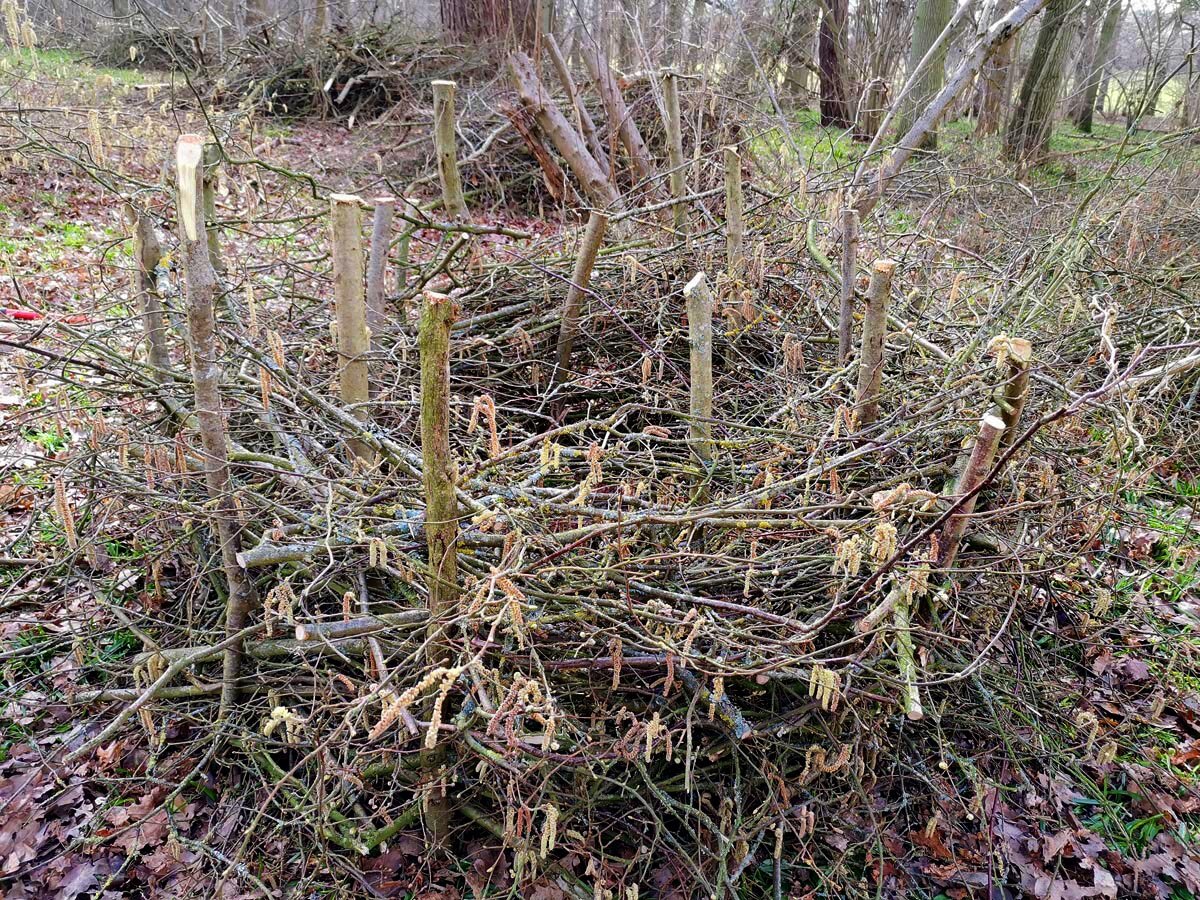Community project traditional | non-traditional coppicing
The tradition of coppicing hazel dates back many thousands of years. Each year a group of suitable trees are cut to ground level, creating a clearing. The light streams in and promotes a burst of ground flora from dormant seeds, plus its an opportunity for other species of trees, like young oaks, to get established. The cut wood is a valuable resource and used in many applications, and the coppicing process has always been beneficial to people and environment.
Today coppices are often neglected, new larger standards like oaks are not being planted and bio-diversity is reduced. Coppicing is seen as labour intensive and requires the construction each year of unattractive rabbit and deer fencing.
We have adopted a "high-cut" coppicing method formulated in Shotover's Brasenose wood from over 10 years experimentation. This means cutting at 80cm from ground level in order to maximise the diversity of the new ground flora and allow the coppiced stumps to re-grow without the need for protective fencing.
All of the coppiced material is useful for weaving and fencing projects, but much of it we also in the woods: by creating piles of brush wood or trunks, we are creating habitats for bugs, birds, mammals and reptiles.
We weave some of these habitat piles as “bird-nest deer guards'“ in order to protect newly layed hazel and smaller stumps from nibbling deer.













